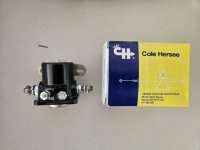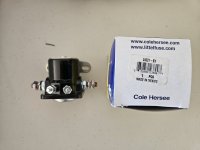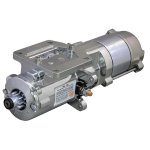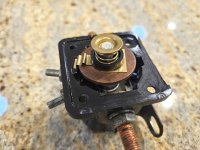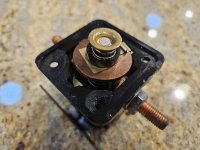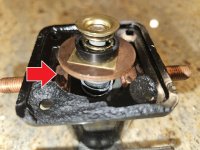Dad's RV-10
Well Known Member
My RV-7 has some kind of intermittent electrical/starter issue. It first manifested as a "click" with no starter engagement when moving the ACS key to the "start" position. I released the key and immediately tried again. The starter engaged.
I think this happened on a couple of flights on separate days (both cold starts). The third time (also a cold start), attempts to engage the starter repeatedly resulted in "click" with no starter engagement (I had flown the day prior).
The PC680 battery is about three months old. Indicated voltage on the EFIS was about 12.4v but past testing showed actual battery voltage to be 13v or better, when checked directly at the battery. In other words, EFIS indicated battery voltage is lower than the actual resting battery voltage. If memory serves, I saw the EFIS indicated battery voltage dropping while I was holding the key in the start position when the starter did not engage. After holding the key in the starter position for several seconds, the starter engaged.
It's a Skytec 149-NL starter, so there is no mechanical solenoid on the starter.
Today, I checked the battery voltage at the battery. It's 13.05v (indicates 12.3v/12.4v on the EFIS). It looks like the starter contactor is the commonly used Littelfuse ES-24021. The coil resistance is supposed to be 3.8 ohms plus/minus 5%. I checked it today (with the solenoid still installed) and saw 3.4 to 3.5 ohms. This is just outside the specification but would that be enough to cause an issue?
All of the cables and connections between the battery, master contactor, starter contactor and starter seem tight, with good integrity.
I had a friend attempt to listen for the "click" to verify if it was the starter contactor I'm hearing but the first attempt to engage the starter resulted in starter engagement just a fraction of a second after hearing the "click." Subsequent attempts resulted in immediate starter engagement.
I'm thinking it has to be either the ACS switch, the starter contactor or the starter itself.
I'm not sure what other diagnosis I can do before I start guessing and replacing parts.
Thoughts?
I think this happened on a couple of flights on separate days (both cold starts). The third time (also a cold start), attempts to engage the starter repeatedly resulted in "click" with no starter engagement (I had flown the day prior).
The PC680 battery is about three months old. Indicated voltage on the EFIS was about 12.4v but past testing showed actual battery voltage to be 13v or better, when checked directly at the battery. In other words, EFIS indicated battery voltage is lower than the actual resting battery voltage. If memory serves, I saw the EFIS indicated battery voltage dropping while I was holding the key in the start position when the starter did not engage. After holding the key in the starter position for several seconds, the starter engaged.
It's a Skytec 149-NL starter, so there is no mechanical solenoid on the starter.
Today, I checked the battery voltage at the battery. It's 13.05v (indicates 12.3v/12.4v on the EFIS). It looks like the starter contactor is the commonly used Littelfuse ES-24021. The coil resistance is supposed to be 3.8 ohms plus/minus 5%. I checked it today (with the solenoid still installed) and saw 3.4 to 3.5 ohms. This is just outside the specification but would that be enough to cause an issue?
All of the cables and connections between the battery, master contactor, starter contactor and starter seem tight, with good integrity.
I had a friend attempt to listen for the "click" to verify if it was the starter contactor I'm hearing but the first attempt to engage the starter resulted in starter engagement just a fraction of a second after hearing the "click." Subsequent attempts resulted in immediate starter engagement.
I'm thinking it has to be either the ACS switch, the starter contactor or the starter itself.
I'm not sure what other diagnosis I can do before I start guessing and replacing parts.
Thoughts?




